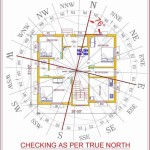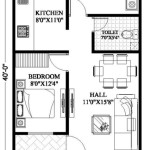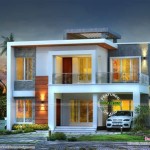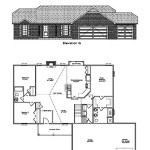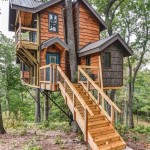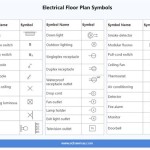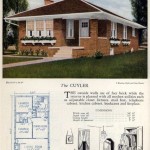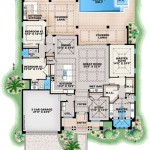Unveiling the Potential of 700 Sq Ft Cabin Plans
The appeal of a small cabin, particularly one around 700 square feet, lies in its simplicity, affordability, and connection to nature. Such a dwelling offers a refuge from the complexities of modern life, providing a compact and efficient space for relaxation, recreation, or even full-time living. The focus shifts from expansive square footage to thoughtful design, prioritizing functionality and maximizing the use of every inch. Careful planning is paramount to ensuring the space feels comfortable and livable, avoiding the cramped or claustrophobic feeling that can sometimes accompany smaller living spaces.
Choosing the right 700 sq ft cabin plan requires a thorough assessment of individual needs and priorities. Factors such as intended use (weekend getaway, vacation rental, primary residence), desired amenities (kitchen, bathroom, sleeping arrangements), and anticipated occupancy levels should all be carefully considered. Site-specific considerations, including terrain, climate, and local building codes, will also play a significant role in determining the feasibility and cost-effectiveness of various design options. The goal is to strike a balance between personal preferences, practical requirements, and environmental constraints.
The design of a 700 sq ft cabin is not simply about minimizing size; it is about maximizing opportunity. With strategic layout and innovative storage solutions, a well-designed small cabin can feel surprisingly spacious and comfortable. The principles of minimalist design, such as decluttering, multi-functional furniture, and efficient use of vertical space, are particularly well-suited to this type of dwelling. The emphasis is on creating a harmonious and uncluttered environment that promotes relaxation and well-being.
Key Considerations When Choosing a 700 Sq Ft Cabin Plan
Selecting the ideal 700 sq ft cabin plan is a multifaceted process requiring careful attention to several critical factors. These considerations are fundamental to ensuring the final structure meets personal needs, complies with regulatory requirements, and harmonizes with the surrounding environment.
Functional Requirements: The primary use of the cabin dictates the internal layout and specific features. A weekend retreat for a couple will have different needs than a rental property intended for families. The number of bedrooms and bathrooms, the size and configuration of the kitchen, and the presence of dedicated living and dining areas must be carefully evaluated. Consider whether a loft space is desirable, as it can provide additional sleeping or storage capacity without significantly increasing the footprint of the cabin. The need for specialized spaces, such as a home office or workshop, should also be taken into account.
Site Conditions: The characteristics of the building site, including topography, soil type, drainage patterns, and access to utilities, significantly impact the design and construction of the cabin. Sloping terrain may necessitate a foundation that accommodates changes in elevation, while poor soil conditions may require specialized foundation techniques. The availability of water, electricity, and septic services will influence the layout of the cabin and the selection of building materials. Solar orientation should also be considered to maximize passive heating and cooling, reducing energy consumption and improving overall comfort.
Local Building Codes: Adhering to local building codes and regulations is essential for ensuring the safety and structural integrity of the cabin. These codes specify requirements for foundation design, framing, electrical wiring, plumbing, and other critical aspects of construction. Failure to comply with these regulations can result in costly delays, fines, and even the demolition of the structure. Before embarking on any construction project, it is imperative to consult with local building officials and obtain all necessary permits. This proactively mitigates the risk of non-compliance and ensures the cabin meets all safety and structural standards.
Design Strategies for Optimizing a 700 Sq Ft Cabin
Effective design is paramount in maximizing the functionality and livability of a 700 sq ft cabin. Strategic planning and innovative solutions are crucial for creating a comfortable and inviting space that feels larger than its actual size. Several key design strategies can be employed to achieve this goal.
Open Floor Plan: An open floor plan, where the living room, dining area, and kitchen flow seamlessly into one another, can significantly enhance the sense of spaciousness. By eliminating interior walls, natural light can penetrate deeper into the cabin, creating a brighter and more airy atmosphere. This design approach also facilitates social interaction and allows for greater flexibility in furniture arrangement. Strategically placed furniture can define distinct zones within the open space without creating physical barriers. Consider using a large area rug to delineate the living area or a kitchen island to separate the cooking space from the dining area.
Vertical Space Utilization: Optimizing vertical space is essential in a small cabin. Tall ceilings can create a sense of grandeur and allow for the installation of loft areas or high shelves for storage. Wall-mounted shelves and cabinets can provide ample storage without occupying valuable floor space. Consider incorporating built-in storage solutions, such as drawers under the bed or benches with storage compartments, to maximize functionality. Utilizing the space above doorways by installing shelves or cabinets is another effective way to increase storage capacity without sacrificing living space. Strategically placing mirrors can also create the illusion of greater space and enhance natural light.
Multi-functional Furniture: Selecting furniture that serves multiple purposes is a key strategy for maximizing space in a small cabin. Sofa beds can provide comfortable seating during the day and transform into a sleeping space at night. Coffee tables with built-in storage can hide clutter and keep the living area organized. Folding tables and chairs can be easily stored away when not in use, freeing up valuable floor space. Investing in high-quality, multi-functional furniture can significantly enhance the functionality and versatility of a small cabin.
Material Selection and Construction Considerations
The choice of building materials and construction techniques plays a crucial role in the overall cost, durability, and aesthetic appeal of a 700 sq ft cabin. Selecting materials that are both sustainable and cost-effective is essential for minimizing environmental impact and maximizing value. Careful planning and execution during the construction phase are crucial for ensuring the structural integrity and long-term performance of the cabin.
Sustainable Materials: Utilizing sustainable and locally sourced materials is not only environmentally responsible but can also contribute to the unique character of the cabin. Reclaimed wood, bamboo flooring, and recycled metal roofing are all excellent options for creating a sustainable and eco-friendly dwelling. Consider using natural insulation materials, such as sheep's wool or cellulose, to improve energy efficiency and reduce reliance on synthetic materials. Sourcing materials locally can reduce transportation costs and support local economies.
Cost-Effective Solutions: Balancing budget constraints with design aspirations is a key consideration in any construction project. Simple, straightforward designs are generally more cost-effective to build than complex, elaborate structures. Opting for standard-sized building materials can reduce waste and minimize cutting and fitting time. Consider using prefabricated components, such as wall panels or roof trusses, to speed up the construction process and reduce labor costs. Prioritizing essential features and delaying non-essential upgrades can help keep the project within budget.
Construction Techniques: Employing efficient and reliable construction techniques is essential for ensuring the structural integrity and long-term performance of the cabin. Properly insulating the walls, roof, and floor is crucial for minimizing energy consumption and maintaining a comfortable indoor environment. Paying attention to details, such as proper flashing and weather sealing, can prevent moisture intrusion and prolong the lifespan of the structure. Hiring experienced and qualified contractors is essential for ensuring the project is completed to a high standard of workmanship. Regular site inspections during the construction process can help identify and address potential problems before they escalate into costly repairs.

Rustic Craftsman House Floor Plans 1 Story Bedroom 700 Sq Ft

2 Bedrm 700 Sq Ft Cottage House Plan 126 1855

Pioneer Plan 700 Square Feet

House Plan 94331 One Story Style With 700 Sq Ft 2 Bed 1 Bath

House Plan 76459 Ranch Style With 700 Sq Ft 2 Bed 1 Bath

700 Square Foot Cabin Mountain Living

House Plan 3 Bedrooms 1 Bathrooms 1907 Drummond Plans

12 Unique 700 Square Foot House Plans Images

700 Sq Ft Hunting Cabin Kit

Country Cottage Cabin Granny Flat 2 Bed House Plans Under 700 Sq Feet Small And Tiny Home Design 59 9m2 644

